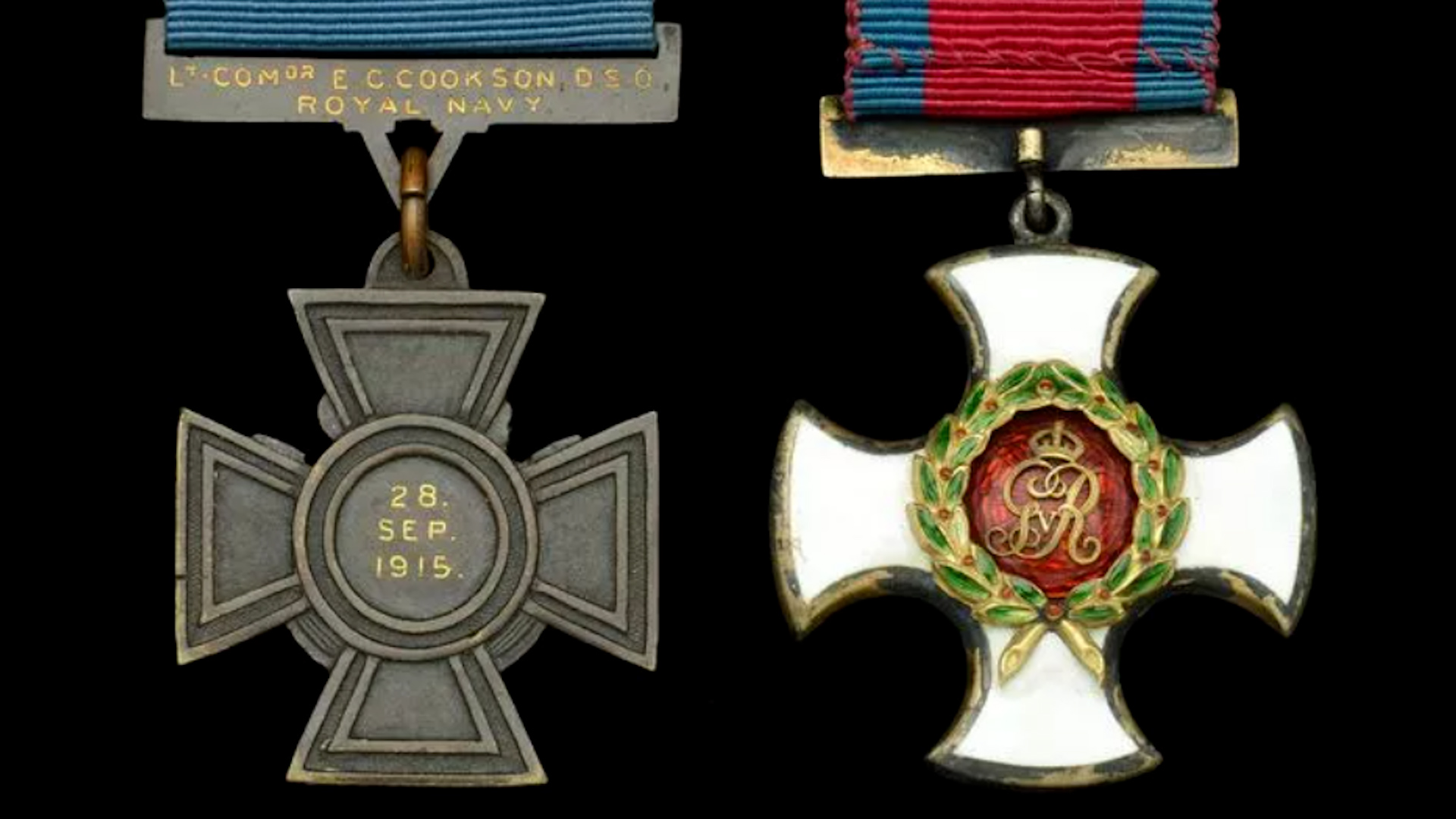
Victoria Cross awarded to axe-wielding officer who stormed enemy boat sells for £220,000

A Victoria Cross that was awarded to the commander of a Royal Navy gunboat who stormed an enemy ship – while brandishing an axe – has sold at auction for £220,000.
Lieutenant Commander Edgar Cookson made the ultimate sacrifice when leading a "cavalry charge" on water as he tried to force his way onto the Ottoman [Turkish] boat during the First World War.
He leapt aboard the vessel under a storm of small arms fire, with a fellow officer later observing: "There were more bullet holes in him than they cared to count."
'Cold, calculated bravery'
A citation in the London Gazette of 21 January 1916 read: "The King has been graciously pleased to approve of the grant of the Victoria Cross to Lieutenant Commander Edgar Christopher Cookson, DSO RN, in recognition of the following act of most conspicuous gallantry during the advance on Kut-el-Amara [in Iraq]."
Lt Cdr Cookson was in a river gunboat called Comet and had been ordered, with other gunboats, to examine and if possible destroy an obstruction made up of several small boats that had been placed across the river by the Turks on 28 September 1915.
When the gunboats were approaching the obstruction, rifle and machine-gun fire opened up on them from both banks.
After an attempt to sink the central dhow, an Arab sailing vessel, usually with lateen rigging, by gunfire failed, Lt Cdr Cookson ordered the Comet to be placed alongside, and jumped onto the dhow with an axe to try to cut the wire hawsers connecting it with the two other craft forming the obstruction.
He was immediately hit several times and died within a few minutes.
"Ultimately proved futile, but his act was one of cold, calculated bravery in the face of certain death. Alas, he rolled the dice one too many times," said Mark Quayle, medal specialist and associate director of auction house Noonans.

His medal
Lt Cdr Cookson's medal was received by his mother in September 1915 and she received the VC from the King at Buckingham Palace on 29 November 1916.
The sailor was buried in Amara War Cemetery, but his grave was subsequently destroyed, and his name is now among those listed on the cemetery wall.
A plaque in Whitechurch Canonicorum in Dorset also commemorates him.
The medal was put up for sale by a private collector and was expected to fetch between £180,000 and £220,000 before being sold for the higher estimate on the hammer at Noonans Mayfair.
The Victoria Cross
The Victoria Cross (VC) is the highest accolade of the British Honours System.
The medal was introduced on 29 January 1856 by Queen Victoria to reward the bravery shown by personnel during the Crimean War.
At first, the policy excluded the award being given to those who had died in action. However, in 1902 an exception was made and six soldiers received the award posthumously for their efforts in the Second Boer War.
Five years later in 1907, the policy was changed to reflect the bravery of those who had died fighting for their country.
Originally, the VC ribbon was dark blue for the Royal Navy and crimson for the Army, but shortly before the Royal Air Force was formed in 1918, King George V approved the recommendation that the crimson ribbon should be adopted by all three services.
When the ribbon is worn alone, a miniature of the cross is pinned on it.









